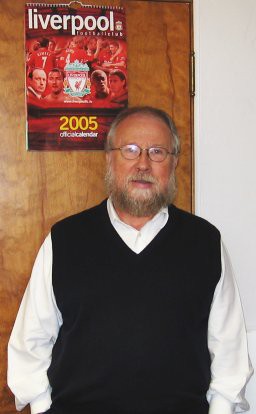Malcolm Hughes

Tel: (520) 626-6470
Email: mhughes@ltrr.arizona.edu
Research interests
"How and why does climate vary on interannual to century time scales?" I view this as the central question of what I call "meso-climatology". This approach overlaps with but differs from "neo-climatology" in which models arise from consideration of first principles and large masses of directly observed instrumental data on the atmosphere, land surface, oceans and cryosphere. The difference arises primarily by virtue of decreasing data density with antiquity and an interannual to millennial perspective. It is less often recognized that meso-climatology also differs in important respects from "paleo-climatology", where changes in the boundary conditions of the climate system impose very large scale changes that that can be well captured at a relatively small number of locations, such as the onset and retreat of the Pleistocene glaciations. As a result of the relatively small changes in climate that occurred over the Holocene, it is much less likely that uniform, global responses will be observed, and so it is necessary to build relatively dense networks of proxy climate records of annual or close to annual resolution.
I have focused on contributing to the building large scale (continental to global) networks of "proxy" climate records with defined chronology, temporal resolution and climate signal. In support of this general aim I work to:
- establish new kinds of tree ring record (new species, new regions, new variables) that may be used, in combination with other records, to "thencast" the behavior of the climate system. Recently I have mainly cooperated Drs. Matthew Salzer (LTRR), Andy Bunn (Western Washington University) and Kurt Kipfmueller (University of Minnesota and other colleagues on the expansion, enhancement and updating of millennial and multimillennial chronologies of bristlecone pine and its congeners. I continue to work on hemispheric and global climate reconstructions.
- use climate reconstructions or "thencasts" to raise questions about the behavior of the climate system. These questions not only apply to the nature of the 20th century in comparison to earlier periods, but also to the potential existence of multimillennial "regimes" at the scale of the Pacific Basin and perhaps on even larger scales.
- base this on improved understanding of the mechanisms controlling tree-ring variability, primarily in collaboration with Academician Eugene Vaganov of the Russian Academy of Sciences, Dr. Michael Evans (University of Maryland) and Dr. Kevin Anchukaitis (Columbia University). The prime focus of our collaboration has been the further development and testing of a model of the environmental control of tree-ring formation. A separate model for the simulation of tree-ring chronology building and the detection of time-dependent biases in tree-ring chronologies is under development with Dr. Kurt Kipfmueller of the University of Minnesota.
Honors
- 1969-71 University Research Fellow, University of Durham
- 1992-3 Visiting Fellow, Cooperative Institute for Research in Environmental Sciences, University of Colorado-Boulder
- 1998 Fellow, American Geophysical Union
- 1999-2000 Bullard Fellow, Harvard University
- 2006 Galileo Circle Fellow, University of Arizona
- 2007 Regents’ Professor, University of Arizona
- 2007-8 Visiting Fellow, Cooperative Institute for Research in Environmental Sciences, University of Colorado-Boulder
- 2008 Visiting Faculty Fellow, National Center for Atmospheric Research.
- 2009 Chair-elect, Section E, Geology and Geography, AAAS
- 2010 Chair, Section E, Geology and Geography, AAAS